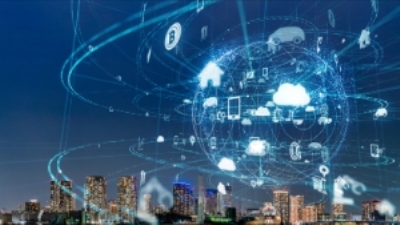According to market Research firm (Gartner, 2017), there will be 7.6 billion internet connected devices in businesses by 2020. It does not include the ubiquitous applications of IoT in the consumer space. Clive Humby, chief data scientist at Tesco claims that Industrial IoT could rake in US $ 14 trillion by 2030 (Rhena Helmus, 2019). The volume of data generated by IoT devices is tempting more and more companies to jump into the bandwagon. But the idea is still in infancy as companies need to figure out how to put the data to good use. Companies are exploring ways of moving IoT strategies from proof-of-concept to deployment. Since the social consequences of IoT have not been fully understood it is crucial for corporates to implement IoT strategies systematically. Machine Learning is indispensable while trying to incorporate IoT strategies.
Let us take the simple case of creating a smart home. You return from office everyday at a particular time and are habituated to having coffee after reaching home. Your smart coffee maker prepares coffee at the time you normally return everyday. The process would be upset if you returned late on a given day (Grosch, 2018). As further enhancement, the IoT connects your car and smart coffee maker with the internet. A delay due to traffic congestion is relayed to the smart coffee maker which suspends activity until you return. There could be days when you did not want coffee as you wanted to go to bed early due to exhaustion. Your health watch could transmit biological information to the coffee maker giving it indications of your current state. The Machine Learning (ML) Algorithms then take a decision whether to prepare coffee or not. Such Machine Learning algorithms is applied to the different variables scenario which get trained and able to predict outcomes with increasing accuracy. The iterations gets better with time.

Machine Learning models interact with their environment and learn from the outcomes in what is known as reinforcement learning. The importance of IoT and ML can be understood from the fact that Uber would rather be seen as a Technology company than a transportation company (Kosaraju, 2020). It’s app connects the passenger looking for a ride and the driver nearby who is willing to take it. Uber’s business model has been built around data enabled by IoT.
An area where IoT and ML is projected to find increased acceptance is in predictive maintenance. Siemens’ “internet of trains” gathers data from sensors placed on tracks and applies ML models to predict the possibilities of failures. It has improved reliability of rail vehicles by upto 99% in the German railways. Technologies such as face recognition are projected to turn cities smart. Zhengzhou is the latest Chinese city to roll out face recognition cameras in its airports, malls and public places. Currently, this is the most complex yet controversial adaptation of IoT and ML due to privacy reasons.
Industrial IoT, though tipped for a big leap has not translated into good return on investment for companies. American farm equipment manufacturer, John Deere, has implemented AI and ML technologies such as computer vision to spray herbicides only in areas with weeds. However, cost of rolling out computation-heavy algorithms will restrict its application in rural areas. Also, most companies are still in the exploratory phase and do not possess the in-house capabilities needed to implement such strategies.
IoT has enabled optimal utilization of energy in malls by collecting data on weather, energy consumption and energy prices and then calculating the most cost-effective solution to use energy generated in the mall.
IoT is not always about cost reduction. It finds application for convenience as well. Switching on lights by issuing voice commands may not be efficient but it is convenient. Smart cities use data collected on air quality and weather to offer solutions in real-time such as offering cheap public transport in places predicted for traffic congestion.
According to IDC,(2019), video surveillance will account for the largest share of IoT data with industrial and automotive category seeing the fastest data growth rates. Many firms are still sitting on huge volumes of data unable to turn them into actionable Information. IoT metadata is also a growing segment. Metadata is data that is created based on other IoT data files. They can be used for Developing Intelligent systems, drive personalization or bring context to random scenarios. You can read about IDC’s forecast of the number of IoT “things” that are connected as well as data generated by them here.
In the long run, organizations must be prepared to manage change in order to incorporate and use IoT and ML for value generation. To effect a digital transformation, organizations must eveolve new methods of hiring and training manpower that can leverage this potential. Few companies possess the scale, skill sets and tech expertise for implementation of successful IoT strategies and they will scout for partners with complimentary capabilities.
- Gartner. (2017). Newsroom: Gartner Says 8.4 Billion Connected “Things” Will Be in Use in 2017, Up 31 Percent From 2016. Retrieved November 27, 2018, from https://www.gartner.com/en/newsroom/press-releases/2017-02-07-gartner-says-8-billion-connected-things-will-be-in-use-in-2017-up-31-percent-from-2016
- Grosch, K. (2018). John Deere – Bringing AI to Agriculture. Retrieved from https://digital.hbs.edu/platform-rctom/submission/john-deere-bringing-ai-to-agriculture/
- IDC. (2019). The Growth in Connected IoT Devices Is Expected to Generate 79.4ZB of Data in 2025, According to a New IDC Forecast. Retrieved February 25, 2020, from https://www.idc.com/getdoc.jsp?containerId=prUS45213219
- Kosaraju, R. (2020). IoT & Uber- Wait and Watch. Retrieved from https://www.theinternetofthings.eu/sites/default/files/%5Buser-name%5D/IoT and Uber-Wait and Watch.pdf
- Rhena Helmus. (2019). Turning The Internet Of Things Into Reality. Siemens Iot Services. Retrieved from https://assets.new.siemens.com/siemens/assets/public.1556633115.131ac2f9-5e8b-4968-ba2f-734eefccdb50.turning-iot-into-reality-whitepaper-by-siemens-iot-services-fina.pdf

